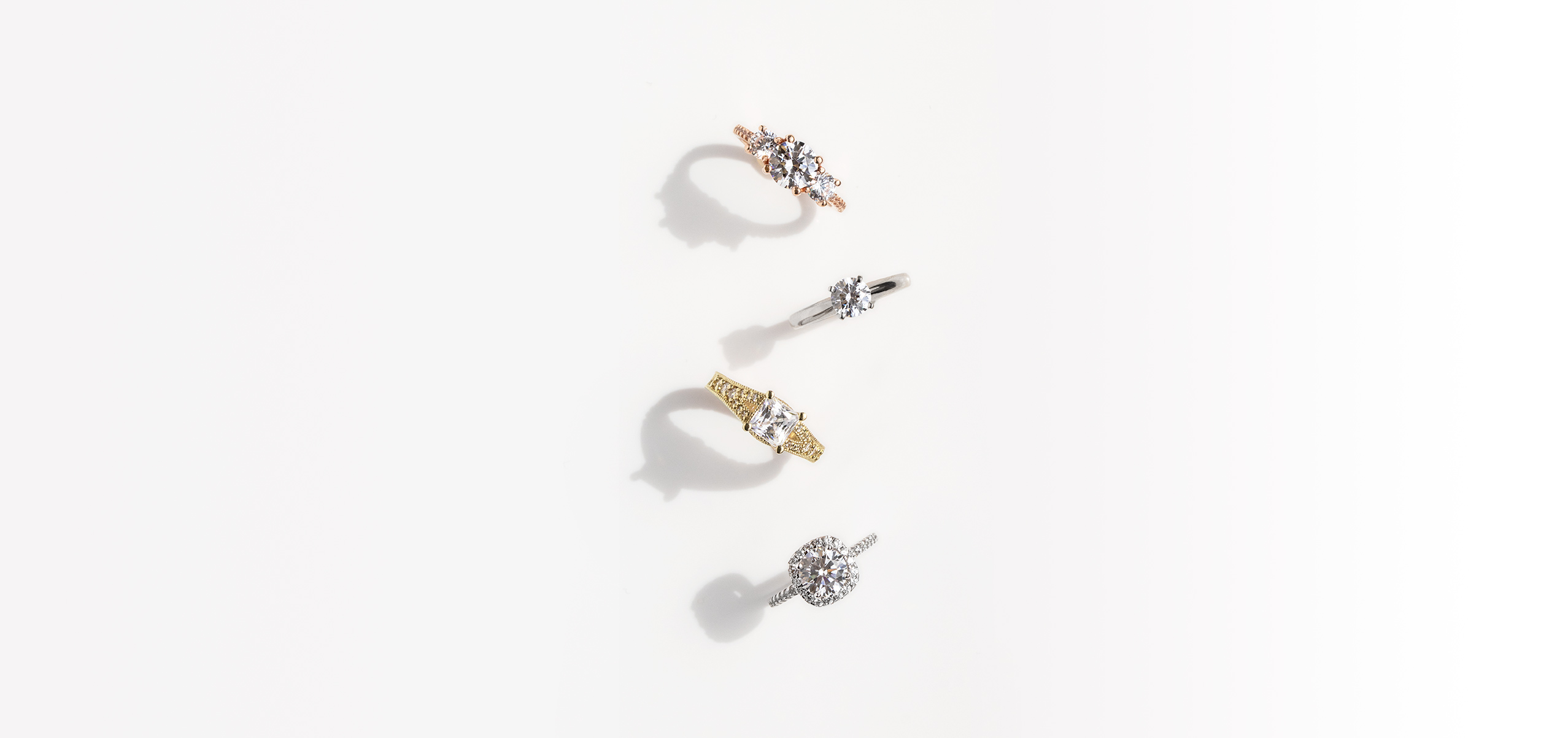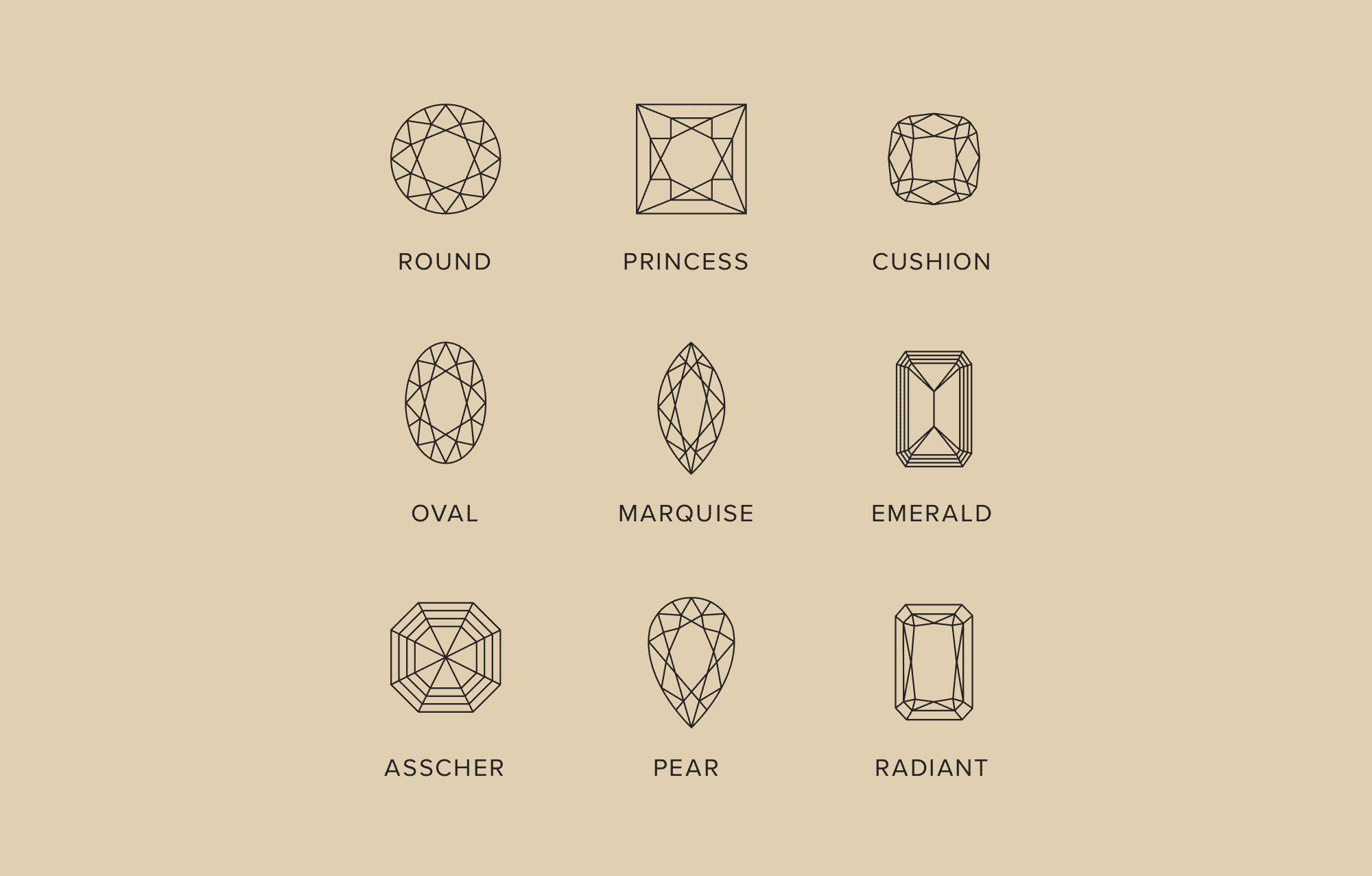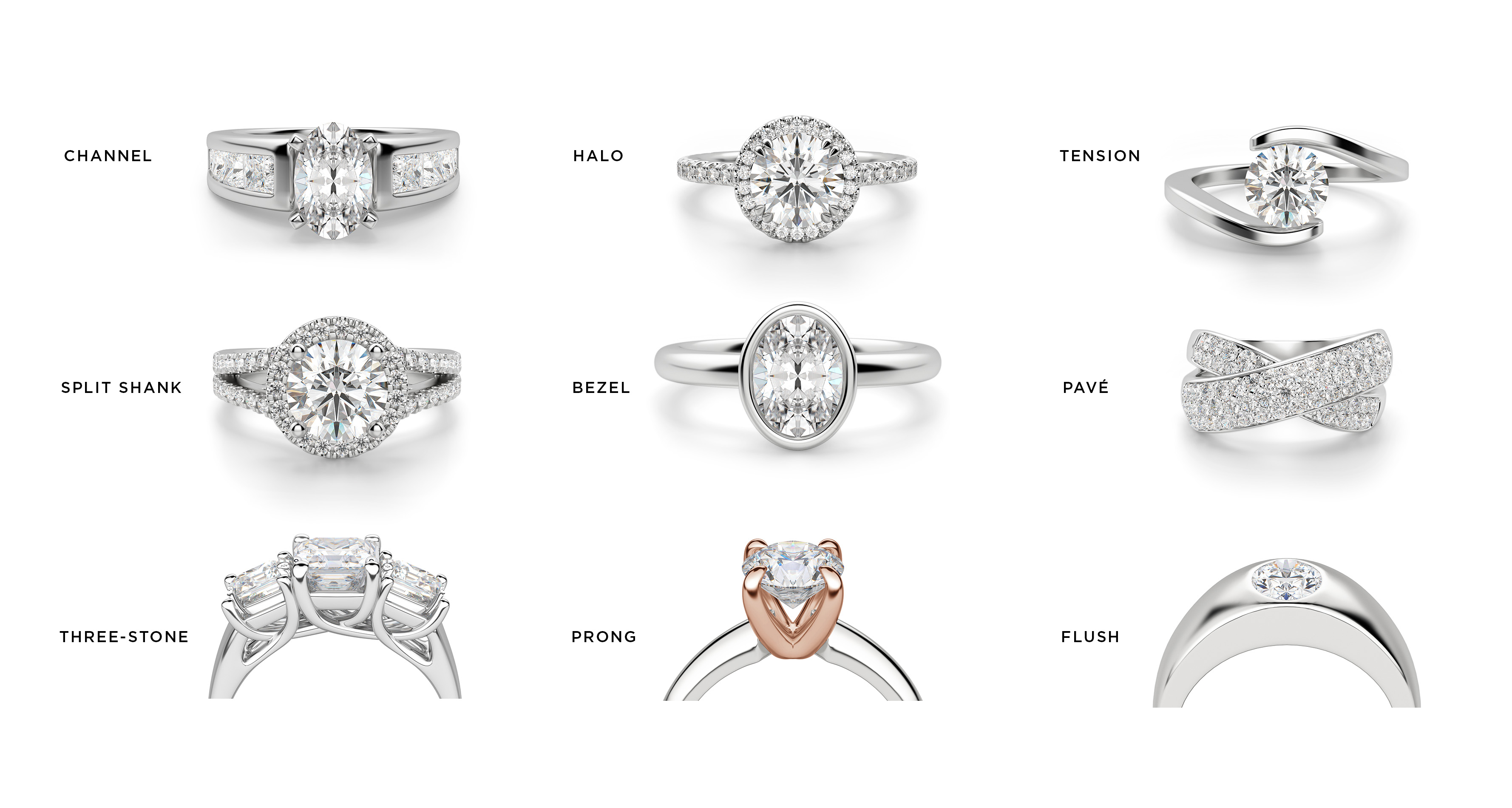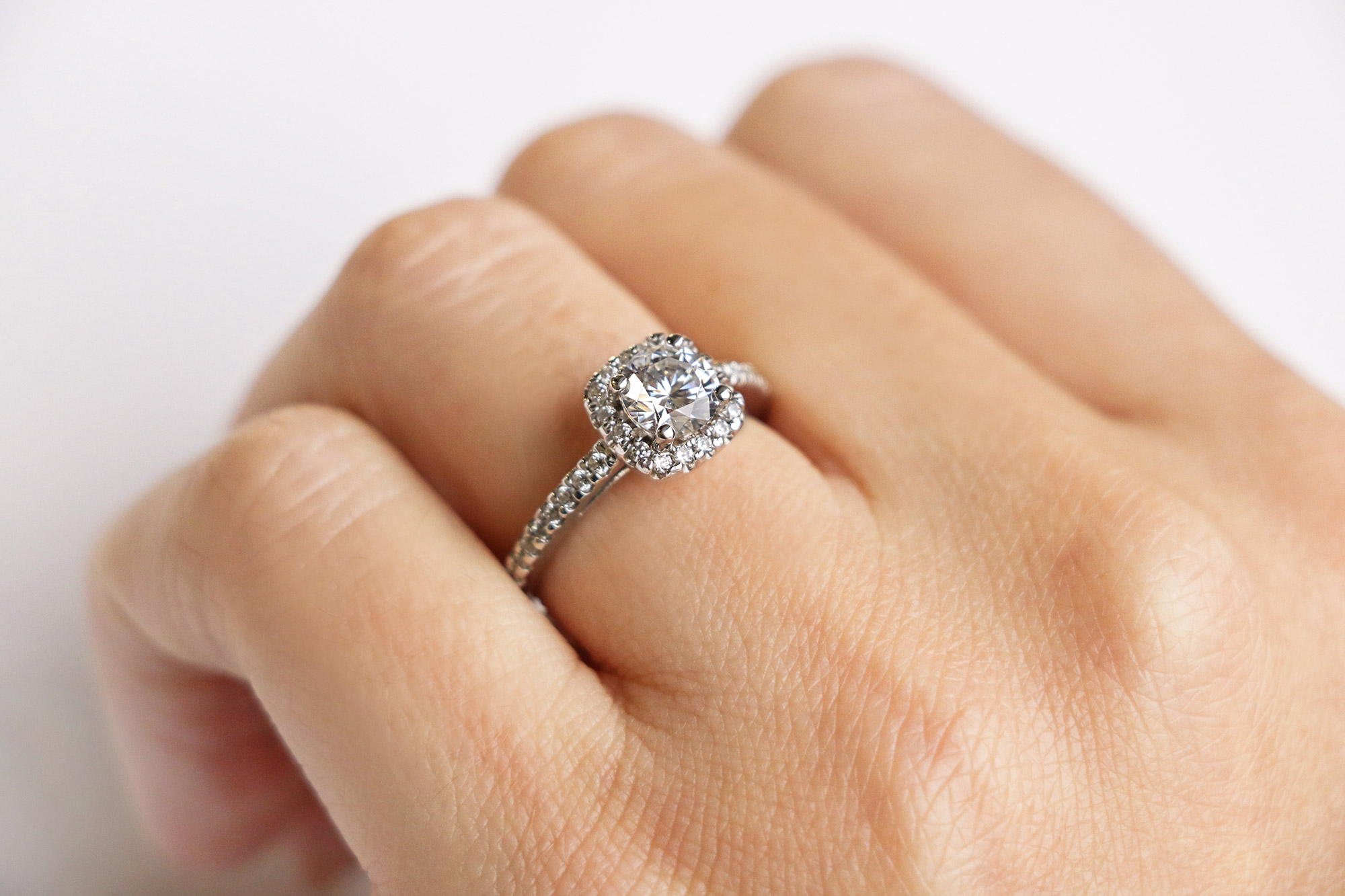What to Know When Buying an Engagement Ring
July 23rd, 2019 / Alese Oldenburg
An engagement ring may be one of the most expensive items you will ever buy. Moreover, it has irreplaceable sentimental value. Though purchasing engagement rings should be a joyous occasion, it is difficult not to feel the added pressure that comes with such a momentous event and purchase. Knowing what to look for when buying an engagement ring can help you feel more confident in the choices you are making and proud of the ring you ultimately choose. Equipped with this knowledge, you’ll have considered all options to find the perfect ring for you and your fiance.

What to Know When Buying an Engagement Ring
Just as no two diamonds are the same, every engagement and wedding ring is unique too, and there are many different style preferences of how to wear your wedding rings. Despite some styles being more popular or trendy, there is a multitude of ways you can customize your ring to create something that fits your individual style. To start your ring search journey, it’s helpful to understand the components of a ring so you know what to consider with different styles from classic engagement ring styles to those that are more unique. The design of the ring itself is comprised of three essential elements: stone shape, setting and metal. Here is what you need to know about each.
Stone Shapes
Whether you decide to look at natural diamonds, lab grown diamonds or simulated diamond jewelry , perhaps one of the most important components of choosing an engagement ring is the shape of the stone featured at the center of the ring. The stone shape, not to be confused with its cut, is the visual appearance of the diamond, whereas the cut refers to how the facets of the stone are arranged. Although the cut of a diamond is a critical consideration when selecting a ring, understanding the different shapes as well can help you determine the type and style of engagement ring you want.

- Round: Just as it sounds, this shape is a perfectly symmetrical circle. A flawless round shape is one of the most popular choices as it lets in the most light to create the maximum amount of sparkle.
- Princess: A uniform square shape consisting of four sharp, pointed corners.
- Cushion: Sometimes referred to as a pillow cut, this shape is generally square or rectangular with rounded corners. Cushion-shaped diamonds can sometimes be mistaken as princess cuts.
- Oval: A shape we are all familiar with, these diamonds are oblong and circular.
- Marquise: Similar to an oval shape, marquise diamonds have pointy ends and a more narrow middle width.
- Emerald: Not to be mistaken for an actual emerald, this shape is rectangular with cropped corners and a large table. When cut properly, you should be able to see clearly through the stone when looking through the top face.
- Asscher: Having many of the same features as an emerald shape, an Asscher diamond is square in shape instead of rectangular.
- Pear: Resembling its namesake fruit, a pear shape has a pointed tip with a rounded bottom.
- Radiant: Either square or rectangular in shape with cropped corners and parallel sides, a radiant-shaped diamond looks very similar to emerald shapes. However, there are subtle differences in the way the facets of the stone are cut, with radiant cut engagement ring shapes being distinguished by their triangular facets which reflect more light and create a unique sparkle.
While a diamond is the most traditional center stone selected for an engagement ring, it is not your only option. Many modern designs have incorporated gemstones such as rubies, sapphires and emeralds as the feature of the ring instead of as just accents. Regardless of what type of stone you choose, the shapes listed above remain the same and a jeweler will be able to help guide you toward the right selection for your choice of stone.
Setting
Once you have selected the stone’s shape, it’s time to select the next most important detail of your engagement ring’s design: the setting. The setting is what holds the stone in place and mounts it to the band. Each setting style will bring a unique aesthetic to the ring’s overall design and will also help you determine which matching wedding bands you want to wear when it comes time to saying “I do.” Some shapes will require specific settings to secure the diamond properly, but it is still useful to be familiar with the variety of options so you can have a more informed conversation with your jeweler about what looks best, or with your partner about what they prefer. The jeweler is also a great resource to speak with about how to care for your engagement ring based on the setting as well.

- Channel: Using the edges of the band to create a channel, a series of stones is set close together within the confines of the band.
- Halo: Small diamonds or other gemstones are used to form a circle around the larger center stone. Similarly, a double halo setting refers to two circles of stones surrounding the center diamond.
- Split Shank: On either side of the ring, the band splits into two as it approaches the center stone.
- Flush: A hole is drilled into the band and the center stone is placed into it so that the top of the diamond sits flush with the band rather than above it. This setting is only possible with smaller stones.
- Bezel: Enclosing the center stones on all sides with metal, this setting leaves only the top of the diamond exposed.
- Pavé: Small diamonds are set into the band in a series. A pavé setting can sometimes be used in conjunction with another style of setting to give the ring more design elements.
- Three-Stone: The center stone is flanked on either side and accented by two small stones.
- Prong: Small metal projections hold the center diamond in place by acting like a claw.
- Tension: Providing the illusion that the center stone is floating, the diamond is held in place by the extreme pressure generated from the band.
Metals
The metal you choose for the band of your ring also has a significant impact on the appearance and design of your ring. As you make a selection, consider what color jewelry you wear most often. There are a variety of metals to choose from, each offering their own sense of style and price point.
These are your options when it comes to selecting a metal for your engagement ring band:
- Yellow Gold: A quintessential classic, yellow gold remains one of the most popular choices for engagement rings with its shiny warm hue. Some of the more popular gold engagement rings that we offer are oval engagement rings and emerald cut engagement rings.
- White Gold: Increasing in popularity, white gold features a cool tone rather than warm and is also much lighter in weight. To preserve its appearance, white gold should be coated in rhodium to enhance the white color and protect the color below, as it’s a softer metal than its counterparts.
- Rose Gold: A signature pink shade, this is simply gold that has been mixed with copper to create the hue. Rose gold engagement rings have seen a recent spike in popularity as a number of celebrities have been spotted wearing jewelry of this color.
- Platinum: A white metal, platinum is easily one of the most prestigious and expensive metals for an engagement ring thanks to its durability and resistance to fading. It is a denser and heavier metal as well as naturally hypoallergenic.
- Palladium: Also hypoallergenic, palladium is a lightweight member of the platinum family that is resistant to oxidation. Palladium is one of the rarest precious metals, making it a luxurious choice for your engagement ring.
- Silver: A softer metal that is more susceptible to scratching and discoloration, silver is not usually recommended for an engagement ring, though you can still find it if you desire.
- Titanium: Appearing as a darker silver color, titanium is most often used for men’s wedding bands due to its durability and lightweight presence.
- Tungsten: One of the hardest metals available, tungsten is virtually scratch proof, which makes it another popular choice for men’s wedding rings. However, some choose to use the seemingly indestructible metal for engagement rings as well.
What to Know About Engagement Rings

After you have an idea of the style and design you want for your engagement ring, the next step is actually making the purchase. At this point, a whole new set of considerations will come hurtling toward you. One key thing to consider is how to determine ring size and here are some of our additional best tips and things to know before you head out to find your ring.
Understand the 4Cs of Diamonds
The quality of a diamond is defined by the grading of four specific characteristics known as the 4Cs of diamonds: carat, cut, color and clarity. The most widely accepted and recognized grading scale for each of these four elements was established by the Gemological Institute of America (GIA) and is used to assess not only the quality of the stone, but the value as well. A diamond will be graded by a skilled and trained professional prior to being certified by the GIA. Each of the 4Cs of diamonds can have an impact on the sparkle and brilliance of a diamond, which is why they’re important to understand when searching for the right stone.
Look at the Report
Always ensure that you have seen a copy of the GIA grading report and certification for a diamond before purchasing it. These reports will not only list the rankings of each of the 4Cs of diamonds, but will also state the composition of the stone and disclose any treatments it may have undergone. GIA certifications also come with a reference number that you can use to verify the legitimacy of the stone and its report. If the seller or jeweler you are working with is unable to provide the report, find someone new to work with.
Work with a Professional
Finding a jeweler or gemologist that is certified and credentialed by a recognized organization can also help ensure that you’re getting the best advice possible. Armed with the appropriate training, this individual will be better equipped to answer all your questions and guide you through the purchasing process. Some notable certifications include the GIA Graduate Gemologist (GG) and Applied Jewelry Professional (AJP). Whoever you decide to work with, there should be a certain level of rapport established so that you always feel comfortable asking for the information you need to make a more informed purchasing decision when you buy your ring.
Have a Budget
Prior to shopping for your big purchase, decide what you can afford to spend and stick to it. If you know this number ahead of time, you’ll be less likely to become distracted by all the options and can even ask your jeweler to only show you rings that fall within your budget. Some flexibility in what you can spend is ideal in order to provide more options, but always know your maximum budget. It also helps to do some research and determine the cost of what your dream ring would be and then adjust your expectations accordingly. Shopping online may be better for those who have a precise budget, as you can control your search much more easily.
Developing a deep understanding of what to know when buying an engagement ring will protect you as you navigate such a large purchase and ensure that you end up with a ring you genuinely love. Combine this with a rich awareness of the design elements of your ring, and you are sure to end up with the ring of your dreams!
*Diamond Nexus strives to provide valuable information, while being clear and honest about our products. The Nexus Diamond™ alternative is a patented lab created diamond simulant that, among all simulants, most closely imitates the look, weight and wear of a diamond, with two exceptions – it is absolutely perfect in every way, and it costs significantly less. Price points and environmental facts expressed in this blog were taken from popular online retailers and may vary. Learn more about the environmental impact of mining by visiting our blog.

